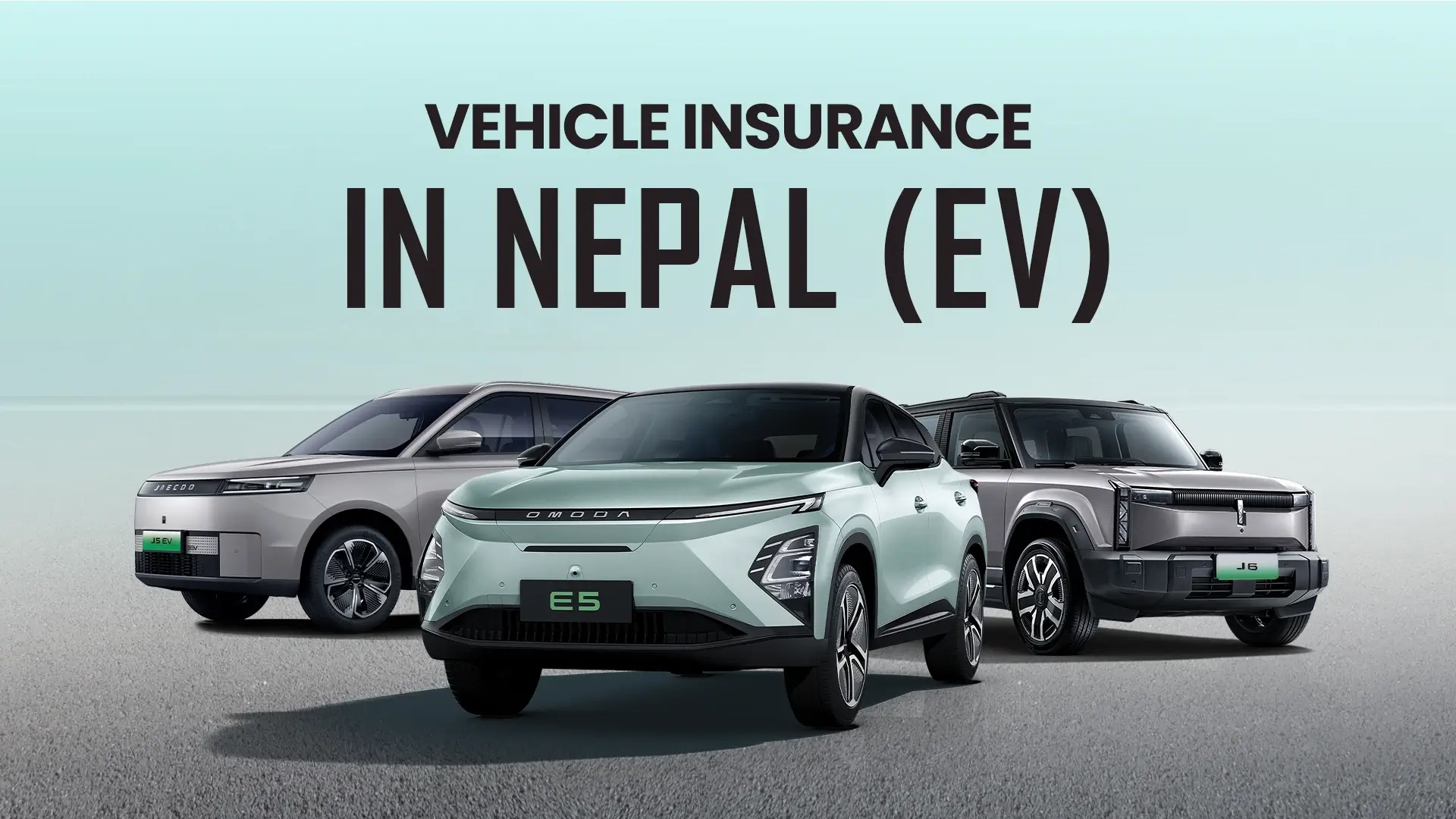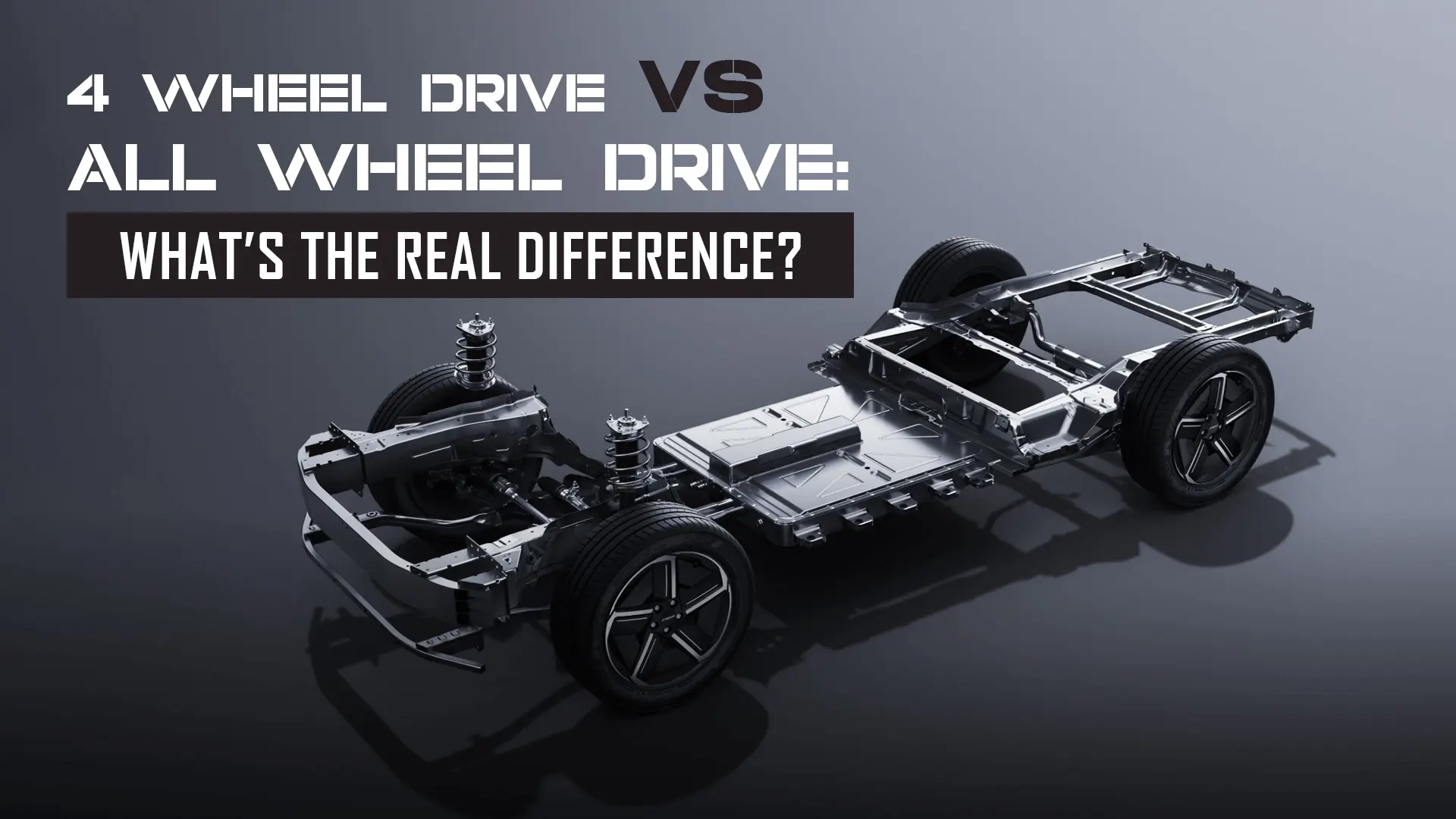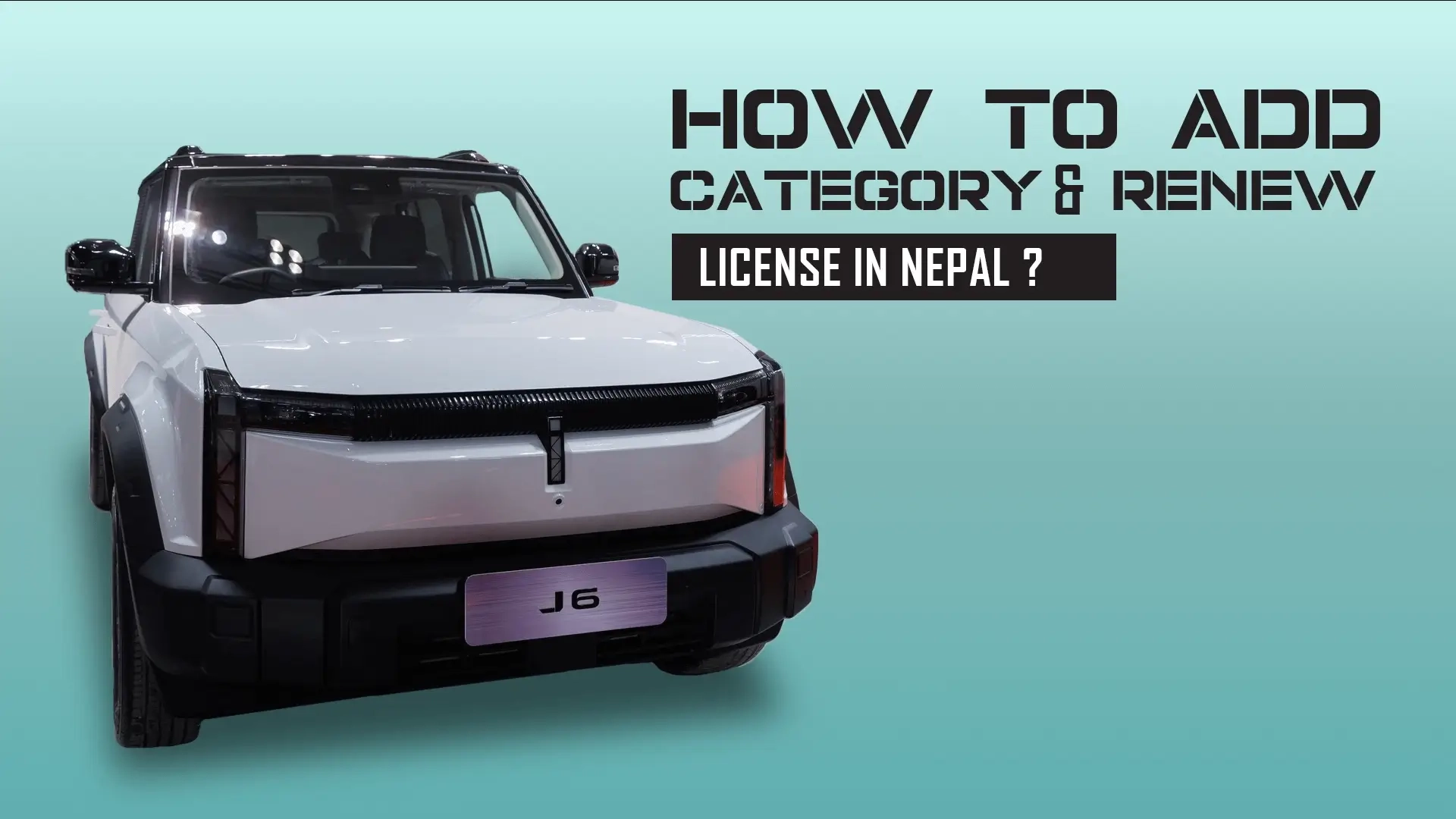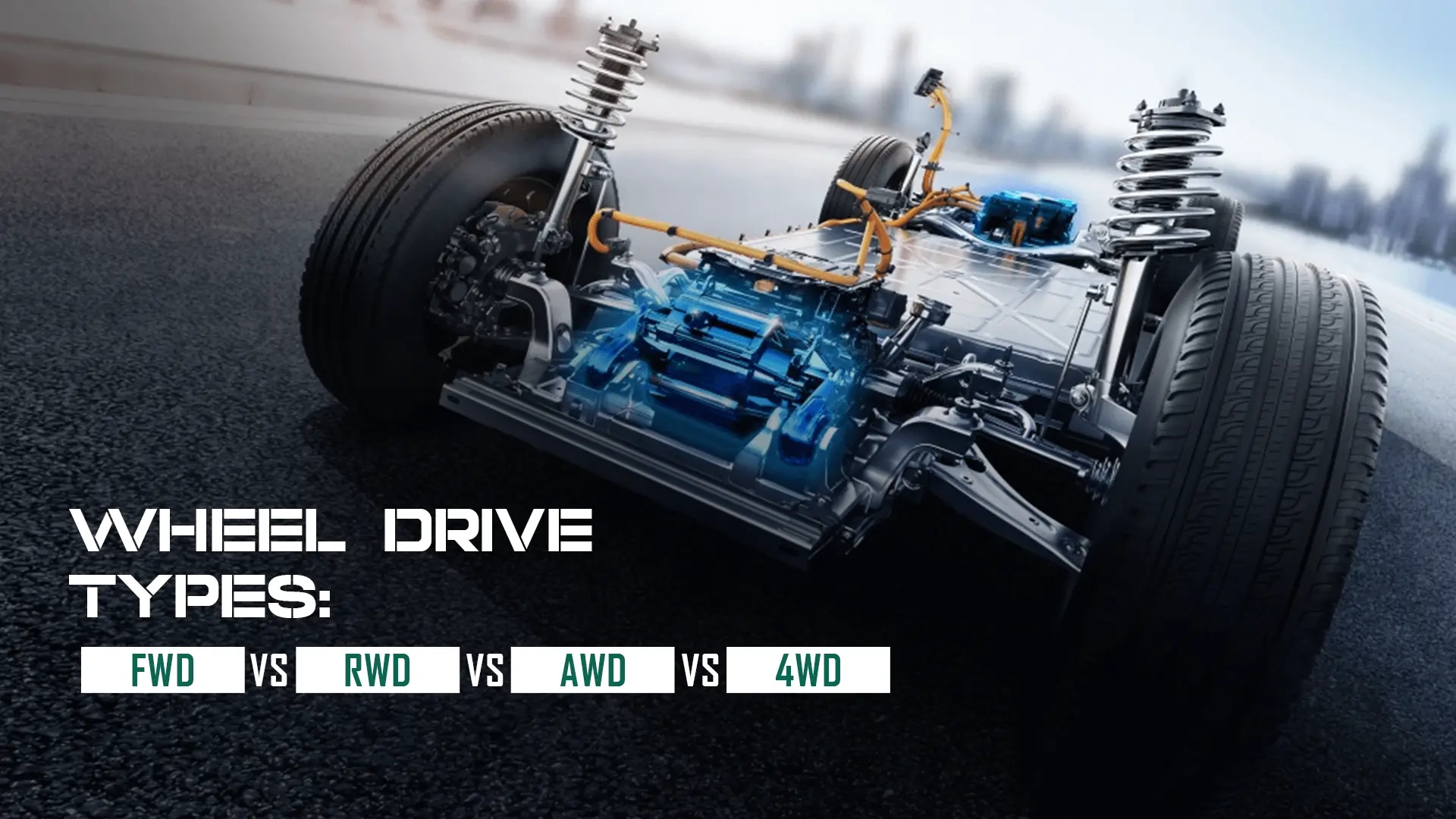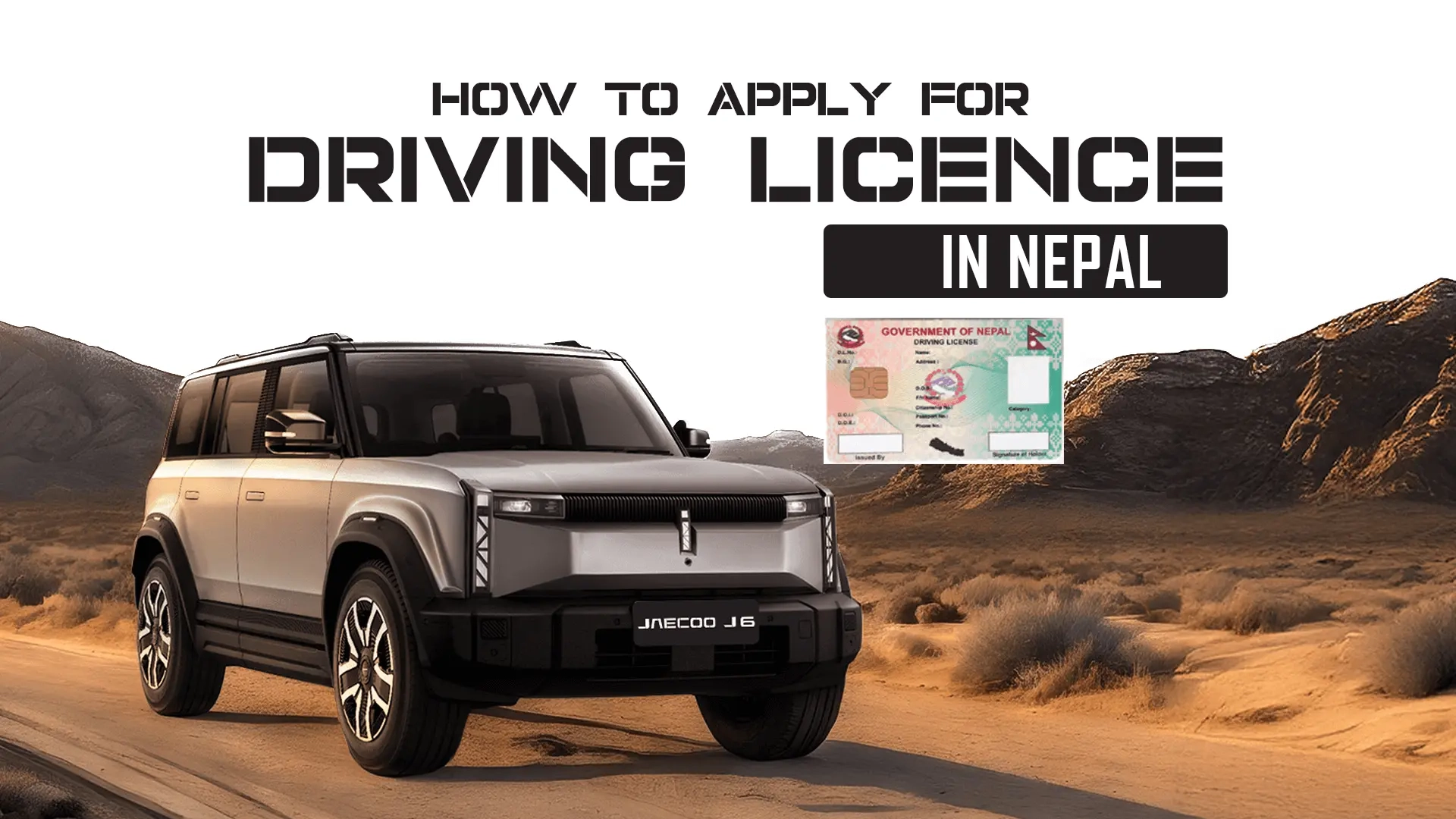Vehicle Insurance in Nepal (EV)
December 21, 2025
Vehicle Insurance in Nepal (EV)
December 21, 2025
Vehicle insurance in Nepal is a mandatory aspect for every vehicle owner. The insurance protects you from unexpected financial losses. It also ensures that you meet legal regulations set by Beema Samiti. Whether you are buying a new car or renewing your existing policy, understanding the details related to vehicle insurance helps you save time, money, and stress.
Every vehicle in Nepal must have third-party insurance. The policy covers injuries, death, or property damage caused to others by your vehicle. Driving without third-party insurance is illegal and can result in fines or penalties.
2. Comprehensive Insurance Provides Stronger Protection
Comprehensive car insurance covers damage to your vehicle, fire, theft, natural disasters, accidents, and third-party liability—offering the most complete financial protection.
This is legally required for every car in Nepal.
Covers:
Does NOT cover:
This is the cheapest option but offers limited protection.
Comprehensive insurance provides full protection and is the most recommended option.
Covers:
It costs more than third-party insurance but saves huge expenses during major incidents.
Add-ons increase the premium but provide greater financial safety.
You need the following:
For claims, additional documents like photos and police reports might be required.
Step 1: Choose third-party (mandatory) or comprehensive EV insurance
Step 2: Select add-ons such as battery protection or charger coverage
Step 3: Prepare documents (bluebook, citizenship, license, photos)
Step 4: Apply online or visit an insurance company office
Step 5: Vehicle inspection (if required)
Step 6: Pay premium and receive your policy document
Step 7: Renew annually to maintain legal compliance
Insurance companies calculate EV premiums based on:
Higher-value EVs or those with larger batteries usually have slightly higher premiums
A 13% Value Added Tax (VAT) is applied when buying an EV and also on your EV insurance premium.
Electric vehicles are taxed based on their motor power (kW).
The exact percentage depends on the power category, but EV taxes are generally lower than fuel vehicle taxes.
EVs have a separate road tax system, and the amount is based on their motor power, not engine size.
This fee must be paid yearly during bluebook renewal.
When renewing EV insurance, companies may charge:
The exact fee depends on the insurance company.
Top companies offering vehicle insurance in Nepal include:
Comparing their coverage, claim process, and customer reviews helps you choose the best option. Visit their website to know more about these companies, or visit the nearby office.
There are two types of settlement:
Filing claims on time improves the chances of smooth processing.
Vehicle insurance in Nepal is both a legal requirement and a smart financial decision. While basic third-party insurance is mandatory, comprehensive insurance offers much stronger protection. For EV owners, specialized EV insurance ensures coverage for batteries, motors, and charging equipment, which makes it essential for safe and worry-free ownership.
Understanding the requirements, documents, premium factors, and add-on options allows you to choose the policy that provides the best long-term value and protection. Get yourself the best EV of Nepal, Omoda&Jaecoo, get it insured, and drive it with pride.
Bluebook Renewal in Nepal (2026)—EV
December 21, 2025
Bluebook Renewal in Nepal (2026)—EV
December 21, 2025
Bluebook renewal is an essential legal requirement for all vehicle owners, including electric vehicle (EV) owners. Here, we have provided a comprehensive guide that walks you through every step that you need to renew your bluebook renewal in Nepal for EV.
There are few things that you need while applying for bluebook renewal in Nepal, so let’s walk through the content to know more on the topic.
A Bluebook in Nepal is the official vehicle registration document issued by the Transport Management Office (TMO). This document includes key vehicle details, ownership information, and your vehicle tax status. Renewing your Bluebook annually confirms that:
If the holder fails to renew the Bluebook on time, they will have to pay fines and attend to legal issues during traffic checks.
It’s best to check your expiry date in advance by reviewing your Bluebook or verifying it through official digital platforms to avoid penalties.
Before starting the renewal process, ensure you have the following:
For many vehicle owners, especially outside major cities, offline renewal remains a reliable method:
TMOs generally operate on weekdays during standard office hours.
Online renewal options help reduce waiting time and simplify payments.
The Nagarik App is the government’s official digital platform that allows vehicle owners to:
In some cases, a physical visit to the TMO may still be required for final stamping.
Popular digital wallets such as eSewa and Khalti offer Bluebook renewal payment services:
These platforms significantly reduce time spent at government offices.
Some private service providers offer door-to-door Bluebook renewal, handling both online payments and office visits on your behalf. This option is useful for busy vehicle owners.
Below are the fees required for bluebook renewal according to your EV type.
EV tax in Nepal is based on battery or motor capacity.
Tax rates may vary slightly depending on provincial regulations.
Late renewal results in penalties calculated as follows:
Renewing on time helps avoid unnecessary financial burden.
How to Apply for Driving License in Nepal?
Bluebook renewal is a mandatory annual process for the vehicle owner of every kind. These days vehicle owners have it easy; with the help of digital platforms such as the Nagarik App, eSewa, and Khalti, the process has become more efficient than ever. By renewing in time, you can avoid penalties and other legal consequences.
4-Wheel Drive vs All-Wheel Drive: Which One’s Right for You?
November 23, 2025
4-Wheel Drive vs All-Wheel Drive: Which One’s Right for You?
November 23, 2025
Buying a new car is something really special in a family. While selecting your next SUV is exciting, it’s equally critical to learn its performance. Explore Omoda & Jaecoo and get into two key terms: 4-Wheel Drive (4WD) and All-Wheel Drive (AWD).
Even though they sound similar, they are built for different driving styles and adventures. In this blog you will get a simple breakdown to help you decide which system fits your road, your routine, and your sense of adventure.
Selecting between 4WD and AWD isn’t just a technical choice—it directly impacts your driving experience. The right drivetrain influences:
Understanding how each system functions when comparing Omoda and Jaecoo SUVs guarantees that you get the most out of your car.
All-wheel drive systems are made to make regular driving more intuitive, safer, and smooth. All four wheels in an AWD vehicle receive power automatically; no buttons or modes need to be switched. The system reacts instantly when it senses a loss of traction, giving you better grip on slippery or uneven roads.
To put it simply, AWD eliminates all uncertainty when driving.
Why you’ll love it:
Remember that 4WD is a better option if you intend to frequently traverse rocky or deep mud terrain because AWD isn't designed for extreme off-roading.
The 4x4 (or four-wheel drive) systems are designed for adventurers who say, "Let's go," when they see a rough road.
Unlike AWD, 4WD systems are often driver-controlled. You can choose when to engage it, depending on the terrain. Low-range gearing, a setting that provides you with additional power and control for climbing steep slopes, crawling through rough terrain, or navigating deep snow or sand, is another feature of some vehicles.
Why it stands out:
A minor compromise: 4WD vehicles may weigh a little more and use less fuel, but that's a reasonable price to pay for unstoppable performance when you need it most.
| Feature | AWD | 4WD |
|---|---|---|
| Power Distribution | Automatic, all the time | Manually selectable (2H, 4H, 4L) |
| Driver Involvement | Hands-off and intelligent | Hands-on, adventure-ready |
| Ideal Terrain | City, highways, light off-road | Mountains, mud, deep sand, rocky roads |
| Ride Comfort | Smooth and efficient | Rugged and powerful |
| Fuel Efficiency | Slightly better | Slightly lower |
| Best For | Everyday driving with occasional adventure | Serious explorers and off-road enthusiasts |
Every SUV from Omoda & Jaecoo is designed for drivers who demand more—more confidence, more control, and a stronger bond with the road.
In short: AWD gives you effortless stability, while 4WD delivers raw strength. Both reflect Omoda & Jaecoo’s philosophy of combining innovation with driving freedom.
Nepal's diverse terrain, which ranges from calm city streets to mountain passes and remote valleys, necessitates careful selection of drivetrain.
Whichever system you choose, Omoda & Jaecoo SUVs are designed to thrive in Nepal’s conditions—balancing performance, safety, and style in every drive.
When it comes to 4-Wheel Drive vs All-Wheel Drive, there’s no single “best” option there’s just the one that fits you.
AWD is the sensible, laid-back option if the majority of your trip is through the city with the occasional weekend getaway. However, 4WD will be your dependable ally if your spirit demands adventure—the open roads, the mountains, and the uncharted.
Whatever you decide on, Omoda & Jaecoo SUVs guarantee that you will always drive with confidence on any road, in any weather, and on any adventure.
Driving License Online Guide—How to Add Category and Renew License in Nepal
November 10, 2025
Driving License Online Guide—How to Add Category and Renew License in Nepal
November 10, 2025
The Department of Transport Management (DoTM), Nepal, has digitized most of its services. This allows license holders to conveniently manage their driving license-related tasks online. Whether you want to add a new vehicle category, renew your license, or request Smart Card fast printing, the process can be completed through the official DoTM online system.
Here in this blog you can get proper information and navigation on license application and add category.
You must first log in before you can add a new category (like motorcycle, car, or heavy vehicle) to your current driver's license. And later submit a new application through the DoTM online system.
If any details are incorrect, visit the nearest Transport Management Office (TMO) to correct them before applying.
Once verified, your dashboard will display a summary of your license details along with all available online services.
You will require a license before adding a category. So, visit this link to know about how to apply for a new driving license in Nepal, and get your license prepared.
License renewal is now easier than ever. The DoTM online system allows you to renew your expired or expiring driving license without standing in long queues.
If any information is incorrect, visit the respective TMO before proceeding.
Once verified, your dashboard will show a summary of your license and available services.
The updated policy has increased the validity of new and renewed driver's licenses for those under 60 from five to ten years. So get your license ready and apply early, and to know more about the new driving license application, visit this link.
The Smart Card Fast Printing service allows license holders to receive their smart driving license card faster after approval.
If any details are incorrect, you must correct them at the respective office before continuing.
After successful verification, your dashboard will display your license summary and available options.
After approval of your application, you will receive an SMS notification. Later you can visit the Help Desk at the Department of Transport Management with your original documents to collect your printed Smart Card.
Wheel Drive Types: FWD vs RWD vs AWD vs 4WD
November 09, 2025
Wheel Drive Types: FWD vs RWD vs AWD vs 4WD
November 09, 2025
Are you prepared to get the family a new car? Well, understanding various features and wheel drive types is essential when choosing the right vehicle. Okay, we will discuss the wheel type for now.
Why is wheel drive type important, you might ask? Well, the way power is delivered to your car’s wheels affects performance, handling, traction, and fuel efficiency.
And there are four main types of wheel: Front-Wheel Drive (FWD), Rear-Wheel Drive (RWD), All-Wheel Drive (AWD), and Four-Wheel Drive (4WD). With this content, get informed about the wheel types and help yourself to make an informed choice.
The wheel receives power from the engine; describe the wheel drive type. The power distribution in wheels determines how your vehicle moves and performs in different driving conditions.
Cars with front-wheel drive (FWD) only use their engines to power their front wheels. Due to its efficiency and affordability, this configuration is found in the majority of contemporary cars. Our Jaecoo J5 and Omoda E5 both feature an FWD system, offering a smooth and efficient driving experience ideal for city and highway use.
Ideal for: City driving, daily commutes, and mild weather conditions.
Rear-Wheel Drive (RWD) vehicles send power to the back wheels. This type creates a balance between steering and propulsion. These features make RWD popular in sports cars and performance vehicles. The Jaecoo J6, with its RWD setup, delivers enhanced balance and sporty handling for drivers seeking performance and control.
Ideal for: Performance enthusiasts and dry-road conditions.
In an All-Wheel Drive (AWD) system, the engine automatically sends power to all four wheels, adjusting torque as needed. This makes AWD vehicles versatile and ideal for changing road conditions. It has high adaptability compared to others.
Ideal for: Drivers who face rain, snow, or mixed terrain regularly.
Four-Wheel Drive (4WD), which is commonly found in off-road and utility vehicles, allows drivers to manually apply power to all four wheels. It’s built for rugged terrains and challenging conditions.
Ideal for: Off-road adventures, rough terrains, and utility driving.
Your choice depends on where and how you drive:
Before buying your vehicle, understanding wheel drive types is very necessary. This helps you choose a vehicle that matches your driving needs, lifestyle, and environment. Whether you value fuel economy, performance, or off-road power, knowing the difference between FWD, RWD, AWD, and 4WD ensures you pick the right system for the road ahead.
Knowing all these factors of the vehicle makes daily traction easy and manageable. You will have a better idea of its maintenance and power, which will help you have a better experience in your vehicle.
If you’re ready to experience advanced design, technology, and performance in your next drive, explore the latest range of vehicles from Omoda & Jaecoo. Discover innovation and style crafted to elevate every journey.
How to Apply for Driving License in Nepal?
October 15, 2025
How to Apply for Driving License in Nepal?
October 15, 2025
One can easily apply for their driving license in Nepal easily and systematically through online application system of the Department of Transport Management (DoTM). You can apply for a driving license for any kind of vehicle by going through this blog on topic how to apply for driving license in Nepal.
There has been an update from the Department of Transport Management (DoTM) of Nepal for its services. It has announced that its central server, which had been down for several weeks due to technical issues, has been partially restored. The department confirmed that the EDL/VRS server is now operational, enabling the resumption of driving license renewal and verification services starting around December, 2025.
Follow the steps given below on how to apply for smart driving license in Nepal.
Go to the official DoTM portal https://applydl.dotm.gov.np/login. This is where you will register and begin your license application. The website allows users to fill out forms, choose vehicle categories, and select preferred DoTM offices for processing.
Click on “Sign UP” if you are a first-time applicant.

You will receive your new username in 000000-00000-0000 format; save it for future log-ins.
Once logged in, you will be redirected to a new dashboard where you will need to provide the following personal details. This step includes various categories of entry, such as
Also add your blood group and contact details where asked.
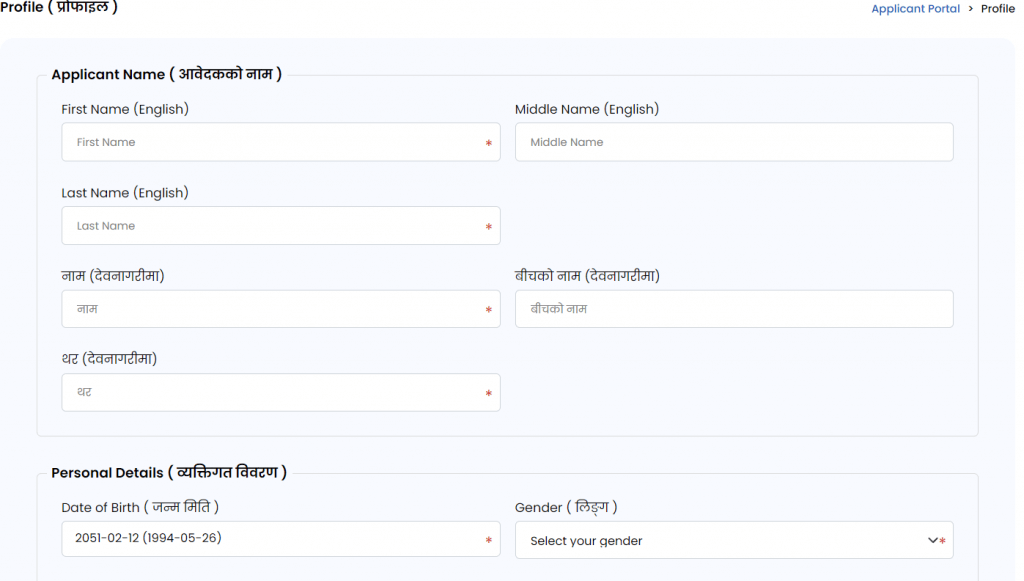
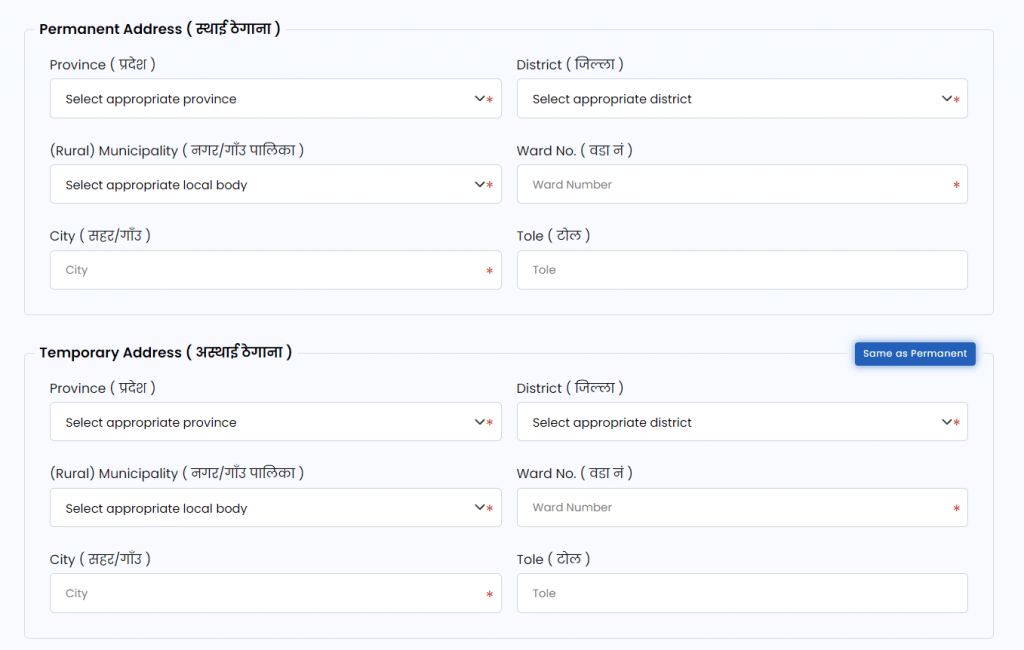
Upload your citizenship photo (back and front) while adding citizenship information.
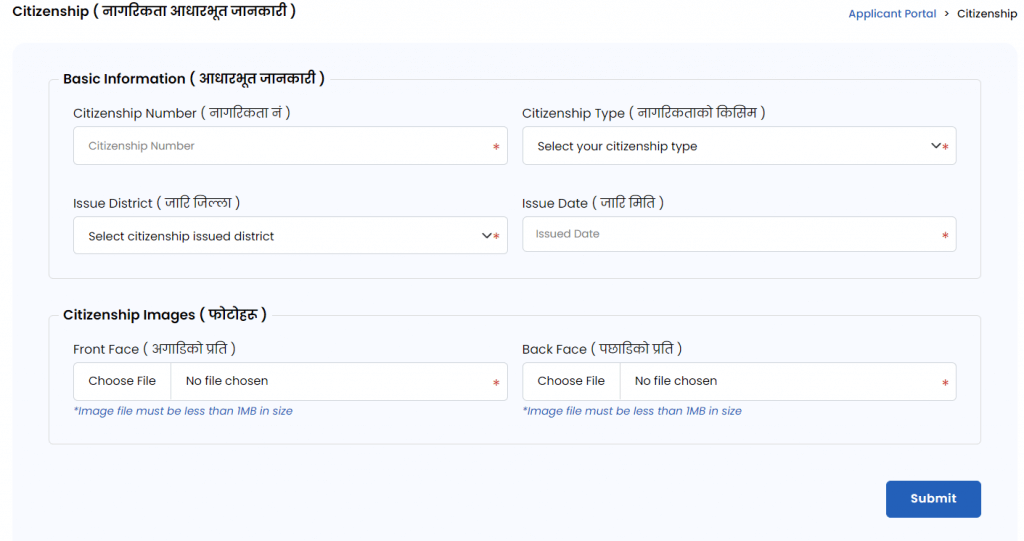

Ensure that all information matches your citizenship certificate exactly. Any mismatch may lead to application rejection.
Select the category of vehicle you want a license for:
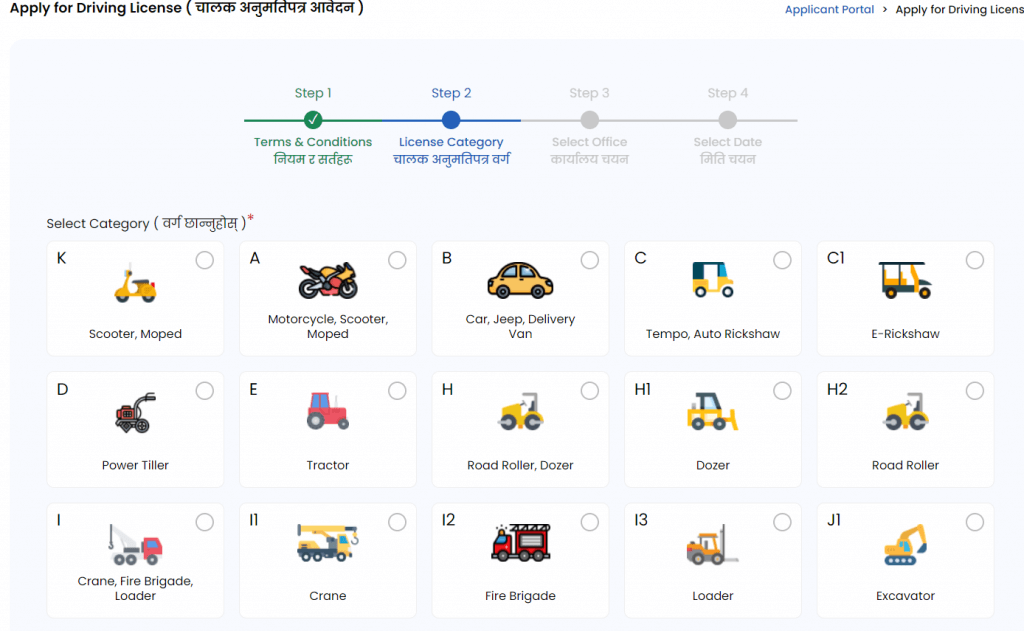
If you plan to apply for more than one category, you’ll need to repeat the process or add categories as instructed on the portal.
After providing all the information, accept the terms and conditions and select a category. Choose your Province and the nearest DoTM office for the test and license processing.
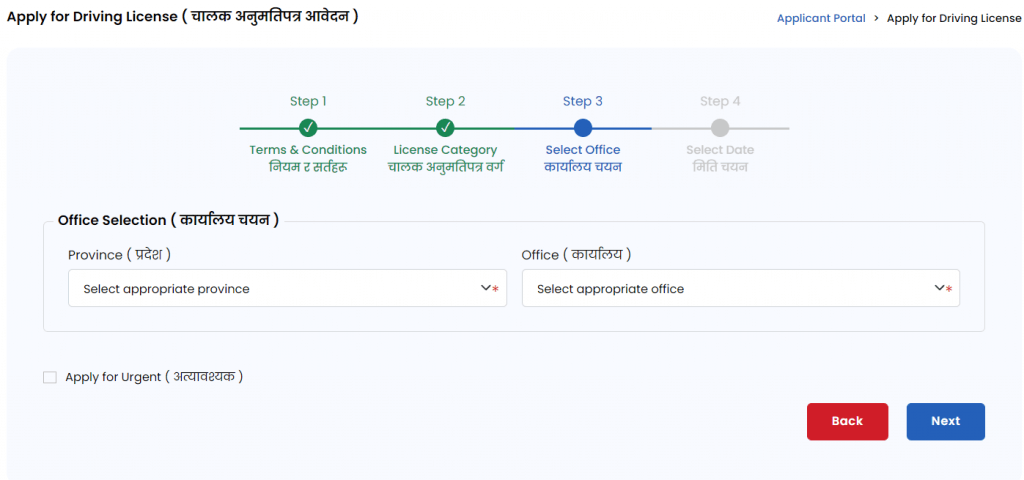
Each office has a limited daily quota for applications, so try to log in early in the morning when new slots open.
After selecting the office, choose your appointment date for biometrics and document verification. However, you can only choose days when the quota is still available. On the right side of the form, you can see the occupied days.

If all slots are full, wait until the next available date or check the system at different times, as cancellations can reopen slots. Afterward, click on the apply button. An OTP will be sent to you at your registered mobile number for final verification. Enter the OTP to complete your online registration form.
You will be redirected to the homepage, where you can see your information and notification of application completion.
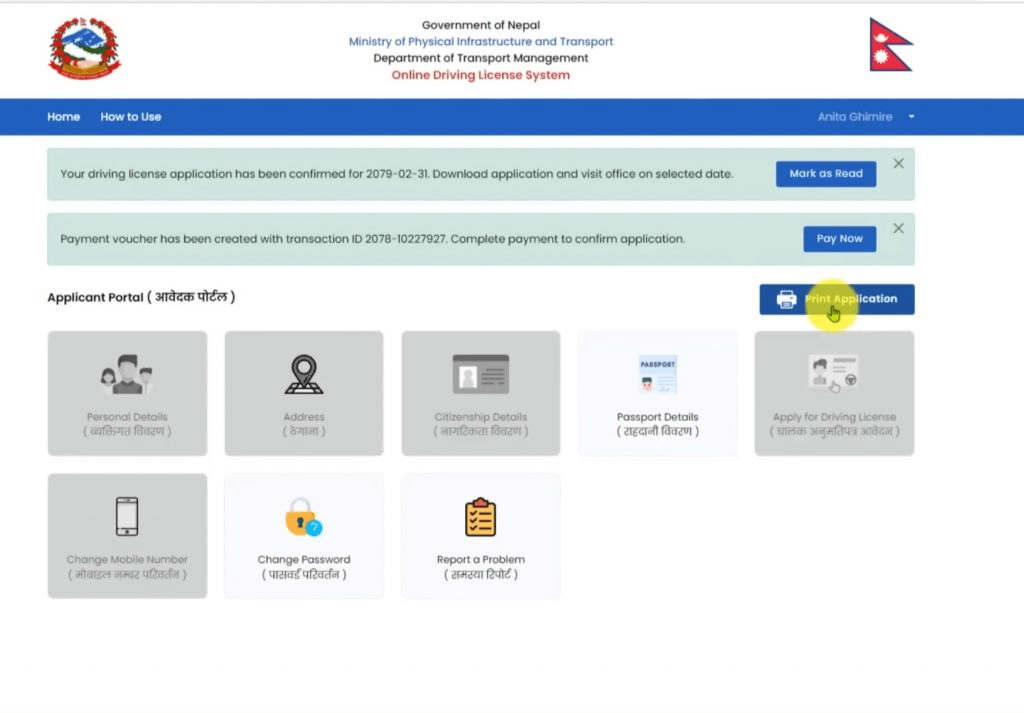
From the home page you can print the driving license application form. Download and print the form and attach your passport-size photo and your signature before submitting to the DoTM office.
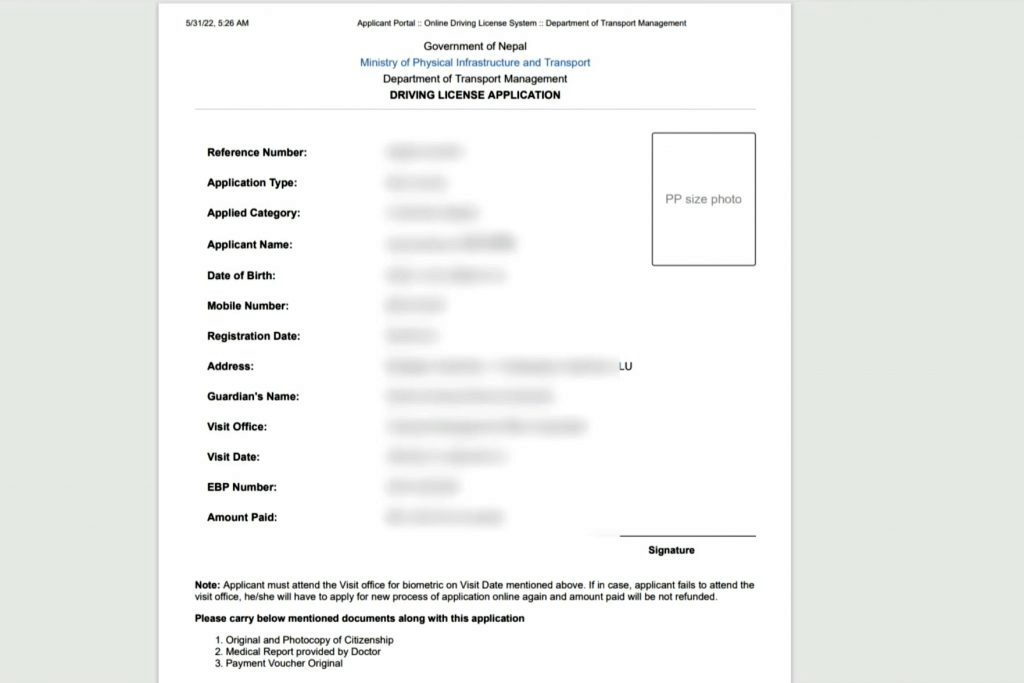
This printed slip must be taken to the DoTM office on your appointment date.
On your scheduled date, visit the chosen DoTM office with the following documents:
At the office, you’ll go through the following steps:
Note: You will need to pay the fee of Rs.500 for every trial.
After completing these processes, you’ll receive your written exam admit card and be informed about the exam schedule.
The written exam tests your knowledge of:
The exam is usually multiple-choice and conducted digitally or on paper. You must score the minimum passing mark of 50 to proceed to the trial test. Results are typically published the same or next day on the office notice board or online.
If you fail, you can retake the written test after a short interval of 10 days (as per DoTM rules). Resubmit your documents along with your admit card to the DoTM office.
After passing the written exam, you will be scheduled for the practical trial test. This test assesses your actual driving skills.
For Two-Wheelers (Category A):
For Four-Wheelers (Category B):
In order to pass your trial exam, you will need at least 70 points for both kinds (2-wheeler and 4-wheeler).
You are allowed three trial attempts within 18 months of your written exam. If you fail all three, you must reapply for the license from the beginning after 90 days.
Once you successfully pass both the written and trial exams:
Until your card is issued, you may receive a temporary driving slip, which legally allows you to drive within Nepal.
When you receive the SMS or notification:
This card contains your personal details, vehicle category, license validity, and unique QR code for verification.
A Nepali driving license was generally valid for five years. But after a recent news update, a new policy extends driving license validity to 10 years for individuals under 60. While those above 60 will retain a 5-year validity period for safety reasons.
You can renew it at the same office before it expires. Renewal involves a short medical check-up and fee payment—no written or trial tests are required unless the license is long expired.
How to Add Caterogy & Renew License
With Nepal’s online driving license system, getting your license has become faster and more transparent. However, due to high demand, appointment slots can fill up quickly—so plan ahead and double-check your details before submission.
Once you clear all stages, you’ll officially hold a Nepali driving license—ready to take the wheel of your new Omoda & Jaecoo vehicle with full confidence and legal assurance.
Note: Due to recent damage to the infrastructure of transportation offices and its database, the next driving license registration in Nepal is halted until Tihar of 2082. Please follow the updates from the Department of Transport Management for the operation of new online and offline driving license registration in Nepal.
However, other online functions—including new driving license applications through applydlnew.dotm.gov.np—will remain suspended until the system is fully restored. The DoTM also noted that vehicle registration services in the Kathmandu Valley have resumed on a limited basis, while system testing continues in other transport offices nationwide. Officials stated that full service restoration is expected soon and have directed regional offices to ready their networking, biometric, and technical systems to ensure smooth service delivery once the entire platform is back online.

